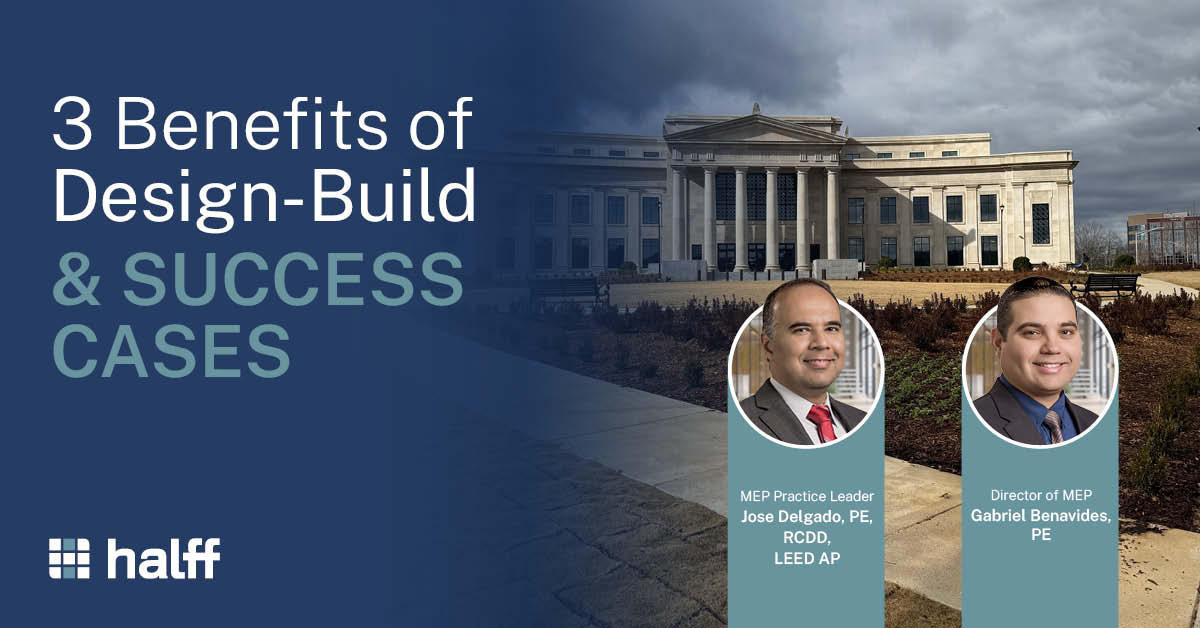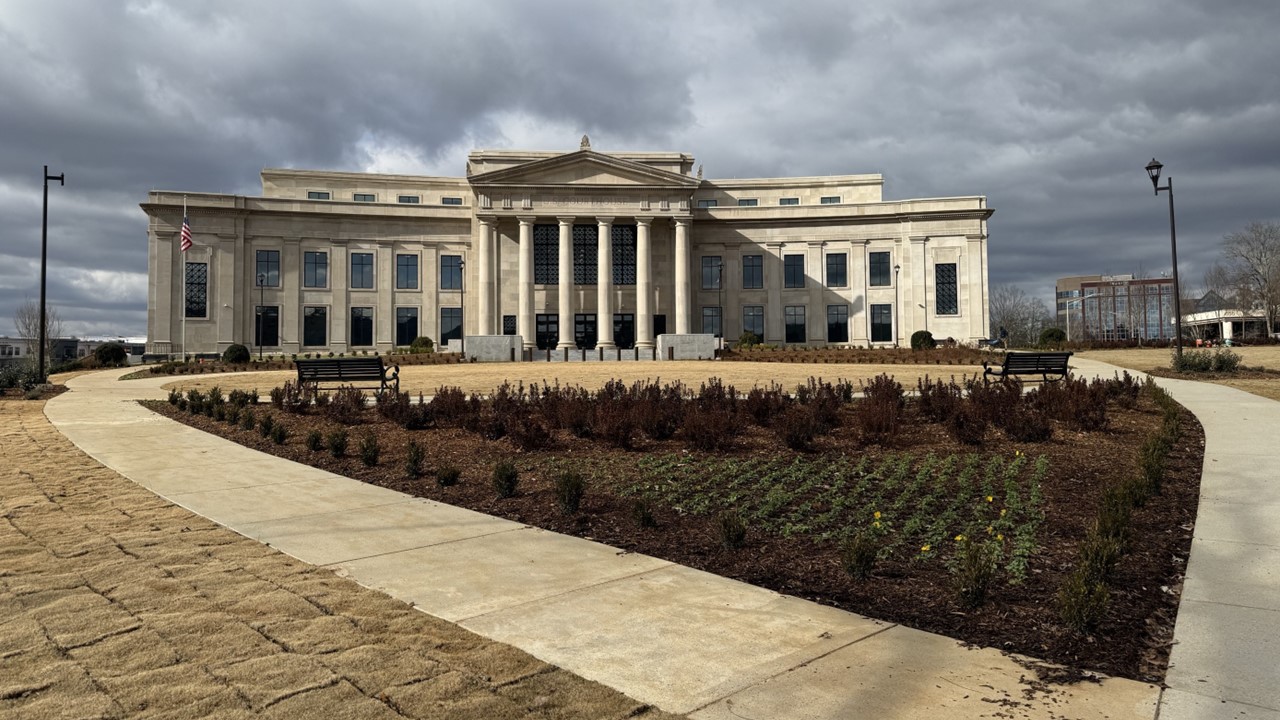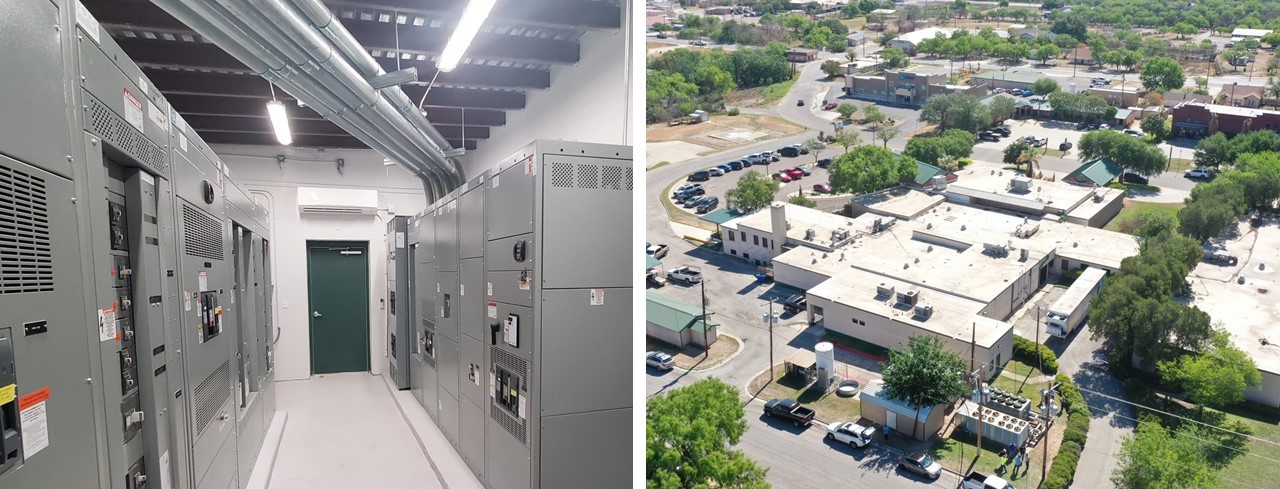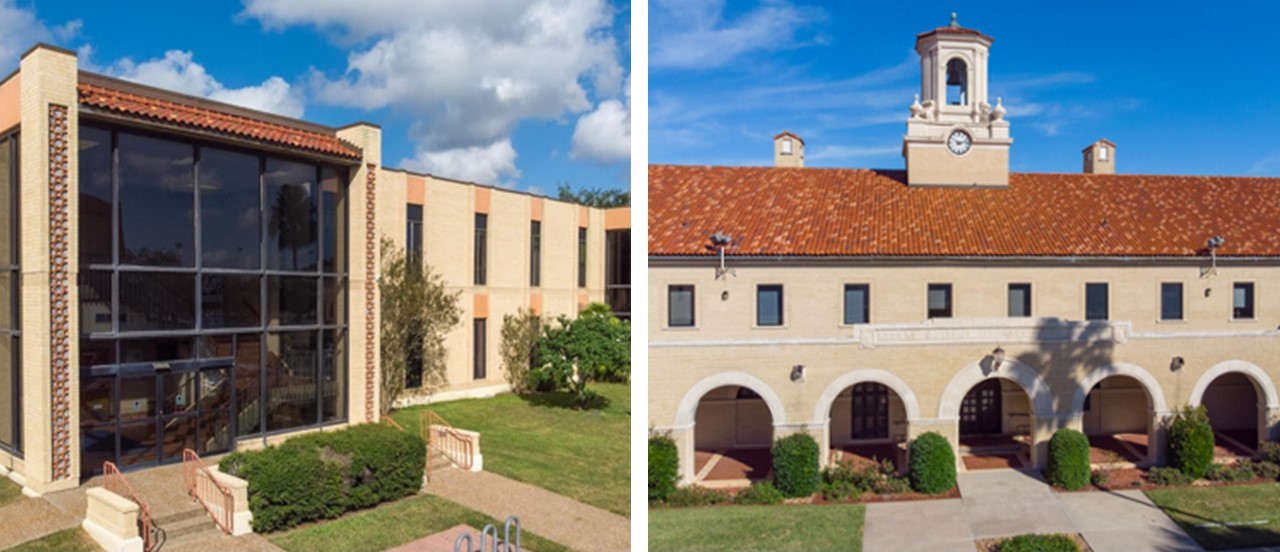3 Benefits of Design-Build & Success Cases
Design-build is gaining greater popularity as a reliable delivery method across various industries.
Are you aware of the many benefits design-build brings?
Halff’s MEP professionals Jose Delgado and Gabriel Benavides weigh in with their insights and success stories on design-build across multiple sectors.
Keep reading to learn about three benefits of design-build, as well as project success examples from multiple sectors!
1. Better Cost Control
Design-build is a very cost-effective delivery method.
Typical design-bid-build projects often pile on serious costs. Segmented design services, separate contractor bidding and hidden fees mount up, leaving less control over the final cost.
“Design-build delivery helps to mitigate escalation cost in projects. That’s huge for the owner, and that’s why they appreciate the cost savings for design-build setups.” – Director of MEP Gabriel Benavides
Design-build offers much better cost control on design and construction, saving owners a lot of money and time.
Why Choose Design-Build?
“Since COVID, we have a lot of supply chain uncertainties, a scarcity of materials and sometimes even scarcity of employees,” says Halff’s MEP Practice Leader Jose Delgado. “To control the associated costs, you have to narrow down overall delivery from design until construction has been finished. That is what design-build does.”
2. Timely Project Delivery
The design-build method results in timely project delivery time when the right team of professionals are involved. Although it comes with a more intense and rapid timeline, it is effective and necessary.
We all know the saying ‘time is money’ in our industry. When design and construction teams work together at the same time during the design-build process, it improves communication and coordination, which helps reduce the overall project time.” – Director of MEP Gabriel Benavides
Concerns around production delays and shortages are often a motivator for using the traditional design-bid-build process. However, the necessary compressed timelines in design-build projects require quicker decision-making, resulting in more timely completion.
“The primary benefit of increasing design-build delivery is to accelerate execution while offering owners a greater degree of certainty in both budget and schedule, thanks to integrated planning and decision-making.”
– MEP Practice Leader Jose Delgado
3. Streamlined Communication
Communication plays one of the most critical roles in design-build projects. They often require a lot more communication, as it’s an essential piece of project success.
“In a design-build project, all consultants, the general contractor, sub-contractors and stakeholders unite to review issues and collaboratively develop solutions almost immediately,” says Halff’s Gabriel Benavides. “For example, if an electrical issue arises, the electrical engineer, architect, electrician subcontractor and construction manager can promptly discuss and devise a plan to address the problem, ensuring the project remains on schedule and within budget.”
One of the drawbacks of traditional delivery methods is slower reaction time, as teams are often fragmented with multiple contractors and subconsultants. This often results in communication that isn’t as streamlined.
“Any change or update that is put on the plans will have a cascade effect, requiring a lot more communication among contractors, subconsultants and the owner.” – MEP Practice Leader Jose Delgado
More compressed timelines with design-build necessitate quick reaction times and efficient communication among all team members.
Success In Action: Halff Design-Build Projects
Federal Sector: Huntsville Federal Courthouse
This United States Federal Courthouse in Alabama is a three-story LEED gold certified design-build project, where Halff provided MEP, ICT and landscape architecture services. The project included a 375-ton variable primary chilled water plant and a natural gas generator for emergency power, supporting business continuation and life safety systems.
Healthcare Sector: Dimmit Regional Hospital
TRANE partnered with Halff’s MEP team to upgrade Dimmit Regional Hospital’s chiller and electrical systems, ensuring reliable power and HVAC for critical emergency services. Halff skillfully designed a new electrical system to meet current standards and implemented a backup generator—improvements that significantly increase the hospital’s power source quality, availability and resiliency for life-saving services.
Public Sector: Texas A&M Kingsville (TAMUK)
Halff is a subconsultant performing many MEP system improvements for TAMUK, including a new chilled water campus utility loop spanning 30 buildings, boiler and cooling tower replacements, architectural repairs and campuswide fire alarm upgrades. The project, scheduled for completion in August 2025, enhances overall system resiliency and lighting across the campus.
When paired with seasoned consultants and contractors, the design-build process is proven to be highly effective and provides many advantages over the traditional design-bid-build and construction management at risk delivery methods.
Need expert help from Halff? Our LEED and RCDD-accredited MEP engineers specialize in design-build methods across diverse sectors. We apply our expertise to create and implement the best systems to fit your needs, and we understand the demands of managing multiple projects.
Take the first step in partnering with Halff by contacting MEP Practice Leader Jose Delgado (Jose.Delgado@halff.com) or Director of MEP Gabriel Benavides (g.Benavides@halff.com).







